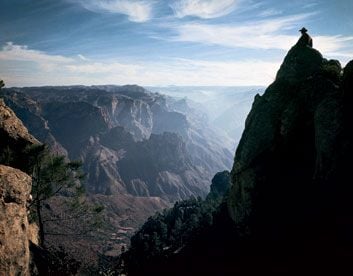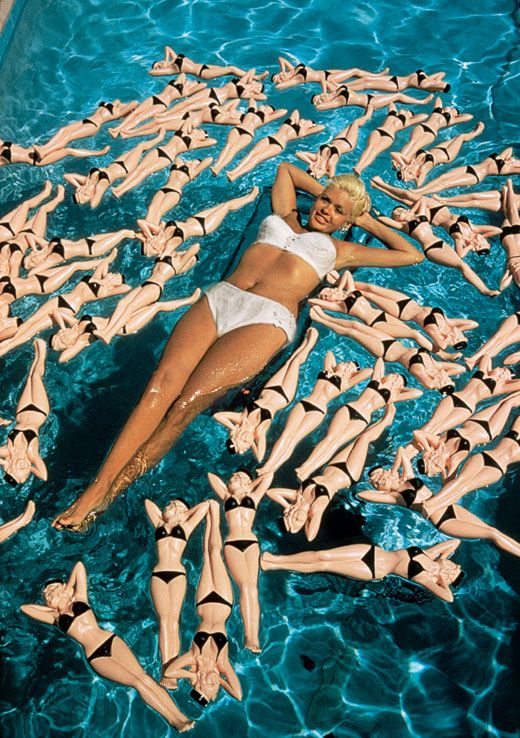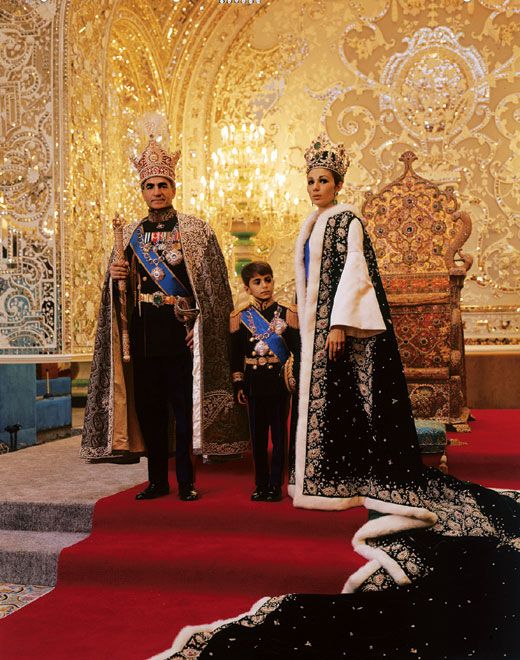Slices of Life
From Hollywood to Buchenwald, and Manhattan to the Kalahari, the magazine pioneered photojournalism as we know it. A new book shows how
It has been the writer's job since ancient times to describe how people behave. With the invention of photography, it became the business of the photographer too. But while writers can gather material simply by talking with people, even on a telephone, photographers and their subjects must interact. The subject must do something of interest, smack-dab in front of the camera—or there is no picture. Luck is important, but it is equally important for photographers to know what to bring out in a subject.
To know that, they must have their own point of view. "We were all individualists," said Alfred Eisenstaedt, dean of photographers for the weekly Life, which defined and dominated photojournalism for its four decades of existence.
Eisie, as he was known, was describing the photographers who had been on the magazine's staff since 1936—a number that would eventually grow to 90, including myself. As Henry Luce, the magazine's founder, put it in Life's prospectus, the Life photographers' business was "to see life; to see the world; to eyewitness great events."
Life photographers witnessed events, and they witnessed them up close. Twenty-one of them covered fighting in World War II for the magazine. None of them photographed a general's strategy, or the tactics of a platoon. No one could do that. But they proved that the expression on the face of a single soldier could describe war best. And what was learned in World War II became part of the magazine's tradition in subsequent conflicts. Consider David Douglas Duncan's corporal under fire, striding over a corpse lying across a trail, in Korea. Think of Larry Burrows' helicopter crewman reacting to a young lieutenant's death in Vietnam.
Of the weekly's many photographers, few had more adventures in war than one of the women on the staff, Margaret Bourke-White. She photographed the German bombardment of Moscow in 1941, spent a harrowing night in a lifeboat after evacuating a torpedoed ship, flew in combat over North Africa, covered the fighting in Italy and Germany, and witnessed the liberation of Buchenwald in 1945.
Robert Capa, who reached Omaha Beach with the first wave at dawn on D-Day, once famously said, "If your pictures aren't good enough, you're not close enough." Getting close enough means putting oneself in harm's way. Except for W. Eugene Smith, who was badly wounded on Okinawa, Capa, Bourke-White and the others came through World War II unharmed. Then, in 1954, Capa stepped on a land mine in Indochina. He died. Paul Schutzer was killed in the Negev desert during the Six-Day War in 1967. Four years later, Larry Burrows lost his life when his helicopter was attacked over Laos.
Eisenstaedt, who died in 1995 at the age of 96, told me, "I never photographed a war, thank goodness. I can't look at blood, and I suffer when I see dirty people and misery." However, in 1933 he photographed Joseph Goebbels, the Nazi minister of propaganda, and the picture casts a spell more than 70 years later. The fierce arrogance of power, normally covered by a false grace of good humor, shone through miraculously onto Eisenstaedt's film. Such pictures convinced Life's creators that photographs themselves could tell the story, not merely adorn or illustrate it—a core belief that attracted an extraordinary group of photographers to the magazine. (A dozen years later, Eisenstaedt took what would become Life's most published photograph: an iconic shot of a sailor embracing a woman in Times Square on the surrender of Japan in World War II.)
Early Life photographers took advantage of improvements in photographic technology that were then being introduced. When high-speed film emulsions and new small, precision-made Leica and Contax cameras came on the market, photographers could record human activity in normal room light for the first time. In 1935, a soon-to-be Life photographer named Thomas McAvoy took a series of pictures of President Franklin D. Roosevelt as the press gathered at his desk. There the great man is: coughing, joking, signing papers. Since no one expected that photographs could be taken in such dim light, they didn't think much of McAvoy's camera. Not long after the pictures appeared, candid photography was banned in the Roosevelt White House.
But starting the next year, the extraordinary, instant popularity of Life—destined to be the country's bestselling weekly magazine—would open doors and give photographers license to photograph the way people actually lived. In 1948, to use just one year as an example, Leonard McCombe spent the better part of a month recording the life of a young woman beginning a career at an advertising agency; Gordon Parks gained the trust of members of a street gang in Harlem; and W. Eugene Smith followed the daily rounds of a country doctor—Ernest Ceriani of Kremmling, Colorado, population about 1,000—at a time when such general practitioners still did occasional surgery.
Much of a Life photographer's energy was spent trying to remove from the scene any trace of his or her presence. We most often focused on human expression and gesture. These might be coaxed from a subject but never demanded. Most often, it was simply a matter of waiting. Subjects became bored. Their minds turned to things they found more intriguing than the photographer sitting in the corner. Snap!
In its photojournalism, the magazine had a symbiotic relationship with radio. Radio's nationwide audience heard the news but could not see it. Life filled that void—as quickly as was possible.
Later, when radio got pictures and became television, the largely black-and-white Life had a problem. In the 1960s, at great expense, the editors decided to combat television by using more color. Burrows, in Vietnam, began the first extended coverage of war in color. Eliot Elisofon, for one, had been exploring the emotive qualities of color for years and had advised movie director John Huston on its use for the 1952 film Moulin Rouge. As a result, he became the color specialist, often called when the editors were seeking more color stories.
That sort of pigeonholing happened all the time. Dmitri Kessel once used a colleague's experience—and his own—to explain: "[Eisenstaedt] took a picture of a dog lifting his leg. Then, because he took that famous picture, when they have a story about Niagara Falls, they say, ‘Ah, water,' and they think of him." For his part, Kessel had photographed Hagia Sophia, the famous basilica in Istanbul, in 1949. "They came again to a church, and they said, ‘Ah, Dmitri Kessel'....Whenever there was a church, I would do it."
The photographer as artist? Well, most photojournalists see too much of the world to take themselves that seriously. Ed Clark, who unforgettably captured a nation's sorrow over the wartime death of Franklin Roosevelt, put his journalistic success this way: "I don't know what made a good picture. I never did know. I made a lot of them. But I never did figure that out." At Life, it wasn't necessarily the photographer's job to produce pictures that were artistic, but to make ones that were striking, even unforgettable. If they were beautiful too, so much the better.
And often they were. The best work of any one of the photographers who worked for Life is remarkable. The best work of the best of them is as good as any photograph ever made.


